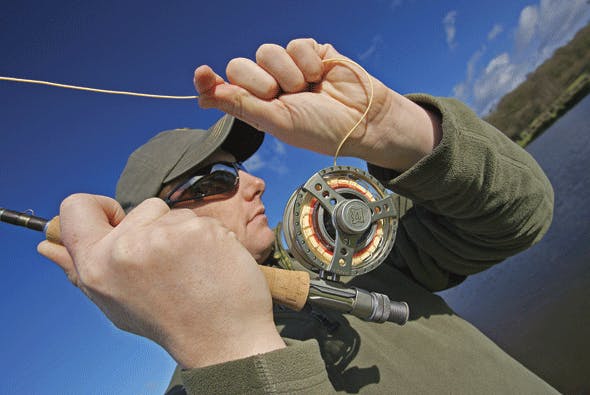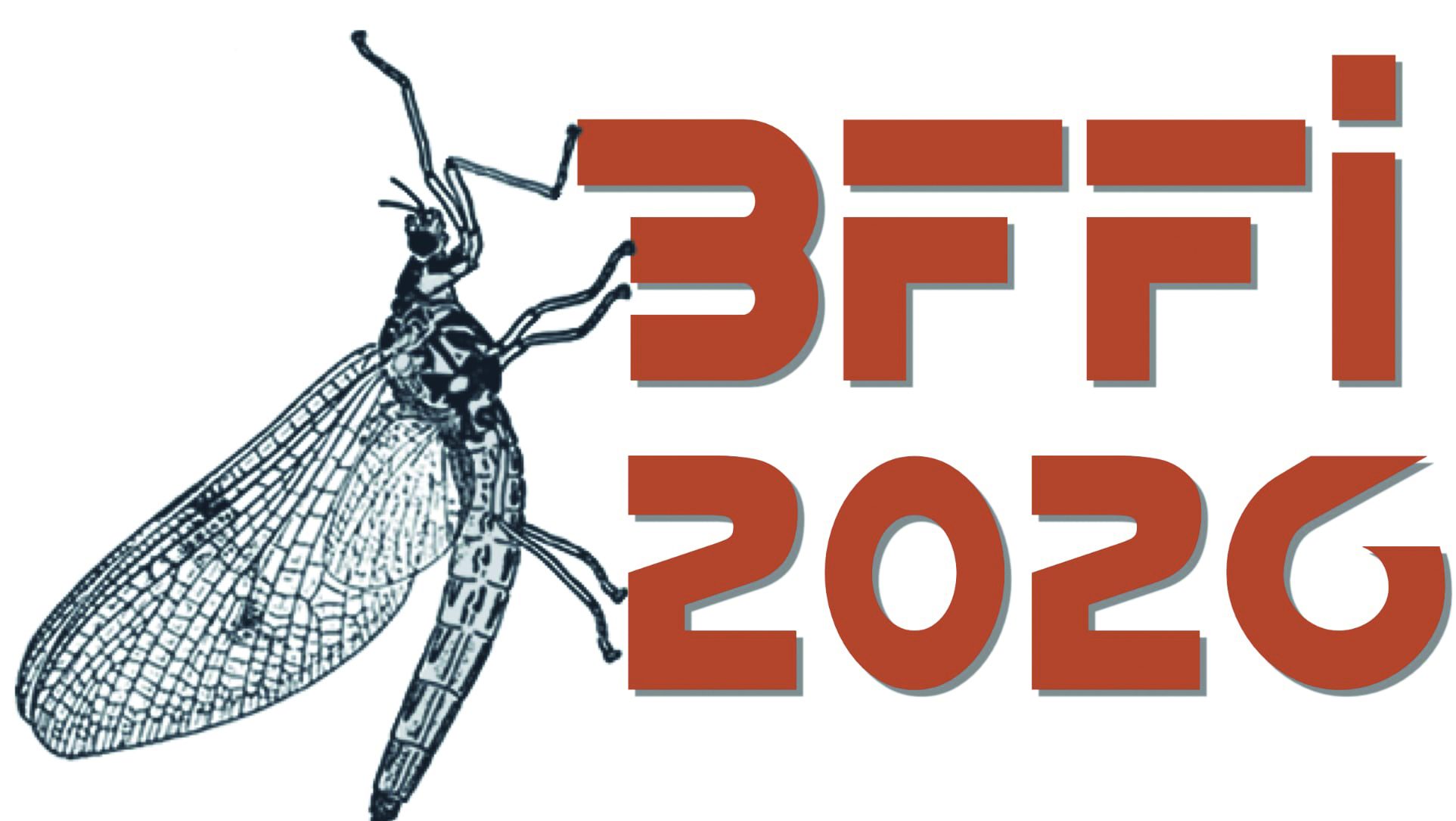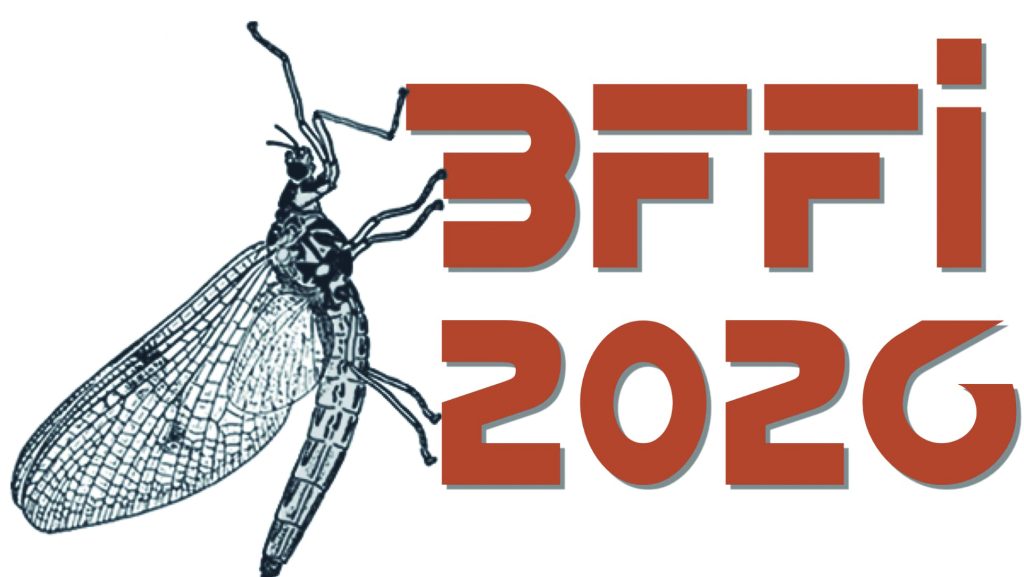AVOIDING CASTING INJURIES WHEN FLY FISHING
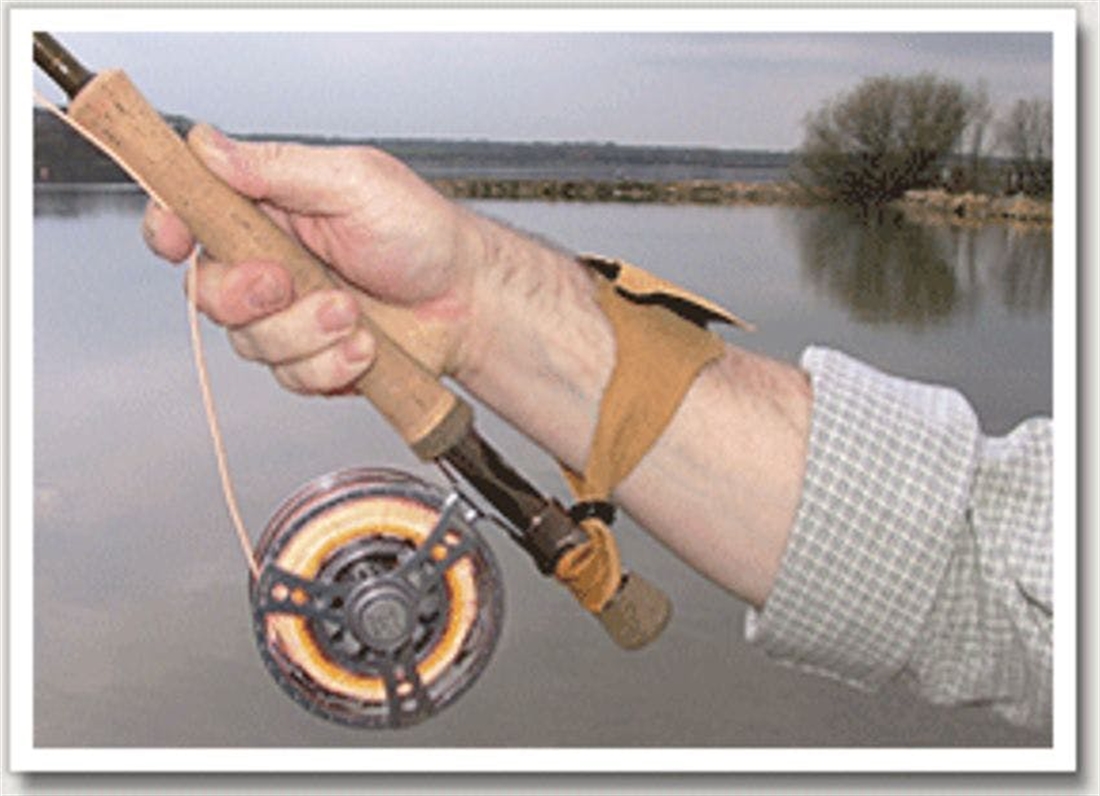
The average fly fisher makes 18.720 casts per year. So how do you reduce the risk of repetitive strain or grip-related injury?
MANY anglers complain about some kind of repetitive strain injury through fly casting. The question is what can we do about it, or how can we reduce the risk?
Injury and solutions
Peter Cockwill: When I get tennis elbow I use a muscle strap just below the elbow to restrict the pull on the tendon and take a Glucosamine tablet every day. Some people have cortisone shots into the joint but rarely to any great effect for casting problems. Injuries I’ve seen as an instructor include:
- Dislocated shoulders – forget casting for a long time.
- Serious muscle damage – learn to cast with other hand.
- Operation scarring causing stiffness – change casting style.
- Arthritis making hands painful – try Glucosamine again or painkillers.
Hywel Morgan: Tennis elbow is a major flyfishing problem as the casting action sometimes places great strain on the joint, muscles and tendons.
When starting a new season don’t do too much. Use lighter rods and lighter lines until your muscles are tuned up, then go out with heavier tackle. It also tends to be cold early-season, so wear clothing that will keep your muscles warm.
Shorter rods are worth considering. If it’s windy the shorter the lever, the easier it is to push through the wind either on the back or forward cast – putting less strain on the body.
On the first few trips of a new season don’t fish for as long as you did on the last day of last season as, again, the muscles aren’t as strong as they were due to the long winter lay off.
Remember pain means danger and as soon as you feel something, stop, and seek medical advice.
Lastly, try to teach your non-casting arm how to cast then, if one arm gets tired, you can swap. This is easily done by using one rod in each hand and allow the non-casting hand to copy the casting hand. This helps you to get the basic timing. Remember it’s too late to try this when you have hurt your casting arm.
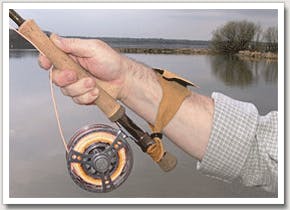
Paul Procter: In many cases, tennis elbow, or tendonitis is caused by gripping the rod too tightly. Impacting on the muscles or tendons in the forearm, it commonly affects newcomers because their muscles are not accustomed to these unfamiliar movements. That said, it plagues more seasoned casters too, especially those using heavy tackle and striving for distance.
To prevent this, hold the rod with a firm but relaxed ‘V’ grip instead of squeezing the life out of it! The ‘V’ grip means you are basically holding the handle as you would a screwdriver and helps restrict wrist-break. I teach pupils to relax their hold at the end of each casting stroke and encourage them to practise with a controlled but flexible wrist (a slight opening of the wrist on the back cast and snap shut of the wrist on the forward cast). This helps reduce the risk of injury. Be careful though, as full blown wrist-break can creep in adversely affecting your cast. Holding the rod butt tight to the underside of your forearm feels unnatural for many people, making them tense up and tighten the grip on the handle.
Nick Hart: Wrist-break should not be totally avoided; to stiffen the wrist entirely is unnatural and painful. But, a controlled, firm wrist is fine. Newcomers should allow two inches between rod butt and underside of their forearm during an overhead cast. Wrist-break leads to low back casts and poor line speeds. To counter wrist-break during an overhead cast work on pausing during the back cast with the thumb fairly upright. This allows for very little wrist-break and assists with a high back cast. Or, try the first finger up the handle to provide similar assistance. Avoid using straps (pic above) to counter wrist-break unless injury/weakness demands it. Having gained a decent foundation cast, attempt techniques such as ‘drifting’ into the back cast allowing a flexible wrist, although the movement needs to be controlled to be successful.
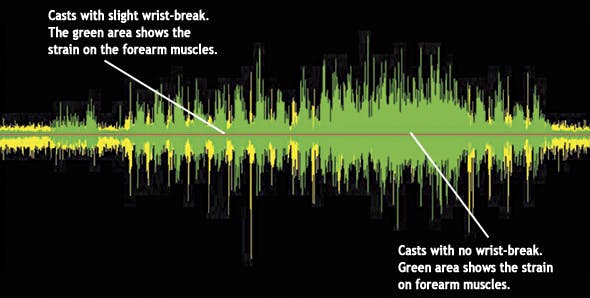
What the science says
WE visited Loughborough University’s Ergonomics centre who suggest anglers tone up in preparation for their first serious session of the year. As casting is repetitive, gradually work up to a full session. Doctor Neil Mansfield of the Dept. of Human Sciences has practical steps to help limit the risk of casting injury.
1 Keep your hands warm
It may still be very cold during early-season and we tend to grip the rods tighter to keep our hands warm. The colder they are the greater the risk of muscle strain on the forearm and dexterity is reduced. So, wear gloves.
Gloves shouldn’t be too thick as thicker ones can make the effective diameter of the grip too big, therefore placing extra strain on your forearm muscles.
With that in mind, Dr Mansfield also suggested that slender rod handles should be preferred to thicker ones when wearing gloves.
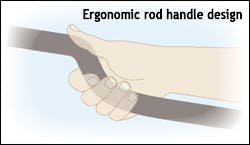
2 Ergonomic rod handle design
Okay, it’s highly unlikely that our traditional rod handles will change in the near future, but ergonomic experts at the university suggest a different rod handle design to help ease the risk of strain. The idea is to create a more natural hand position and grip. With the injuries associated with casting, it’s a case of ‘one thing leads to another’. When your hand is forced into an unnatural position, the forearm compensates by taking more strain, then the shoulder and so on. So, logic would suggest getting the grip right.
3 Let’s upset the casting instructors!
Professional casting instructors have traditionally seen wrist-break as a dirty word! But our tests at Loughborough University showed that allowing slight wrist-break meant less strain on the forearm muscles, leading to reduced risk of injury. Researcher Lauren Morgan attached electrodes to Editor Russell Hill’s forearms while he performed casts with wrist-break and then without. The difference in strain on his forearm muscles is clear to see in the graph. So, it seems a little wrist-break is actually good for your forearm (see graph opposite).
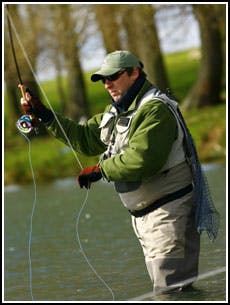
5 ways to reduce risk of injury
1 The key to beating aches and pains is to remain relaxed while casting. A tense arm/ shoulder etc., will become painful.
2 The same goes for the hand. D Do not grip the rod for all it is worth, instead let it sit comfortably in the hand.
3 Allow the rod and line to do the work, a forceful technique employing shoulders for example will lead to stressed muscles.
4 Find a good balance point on the cork handle of the rod. Generally speaking, thumb on top, with thumb placed near the join of handle and blank is good.
5 Use a rod that is not too heavy for you and where possible go for modern carbon. Old ‘hand-me-down’ greenheart and cane blanks are generally heavier than modern products and can lead to fatigue.
